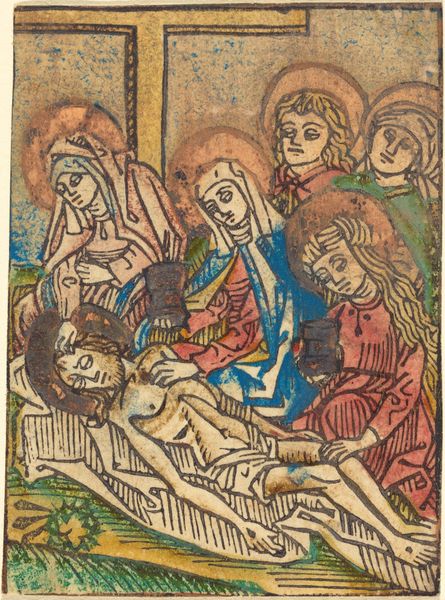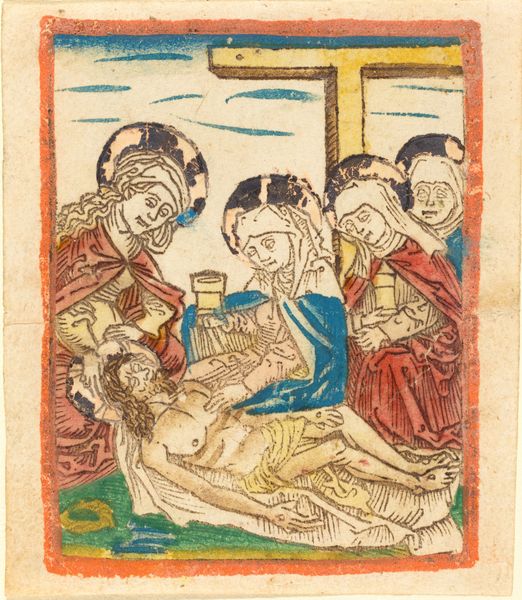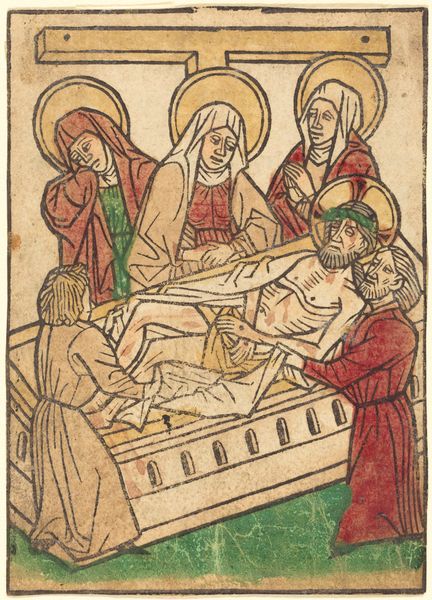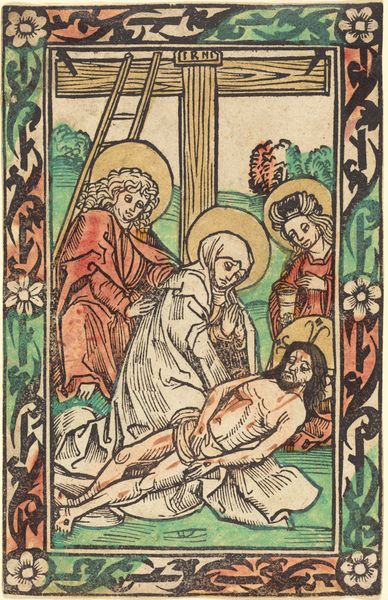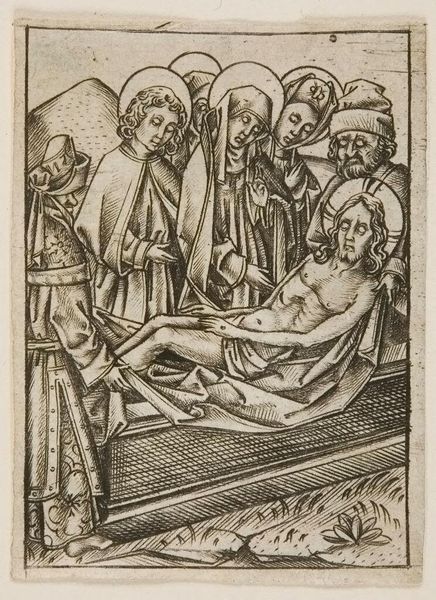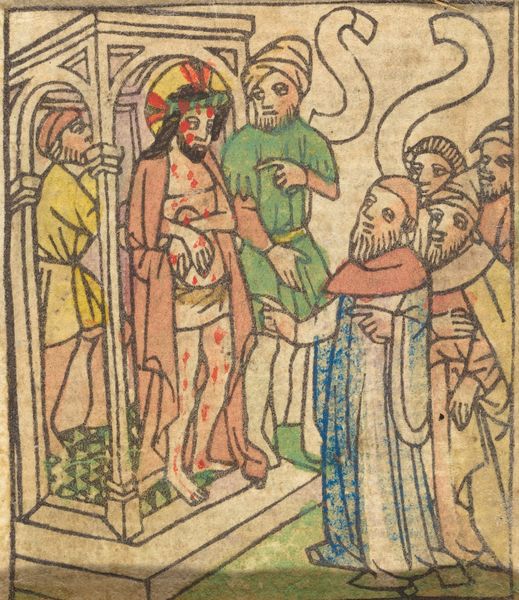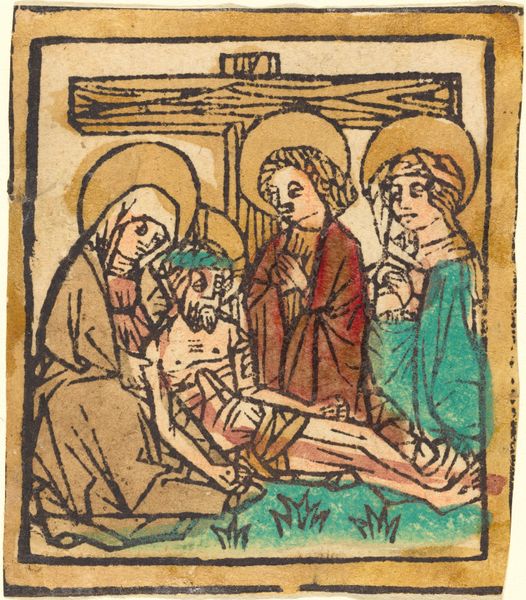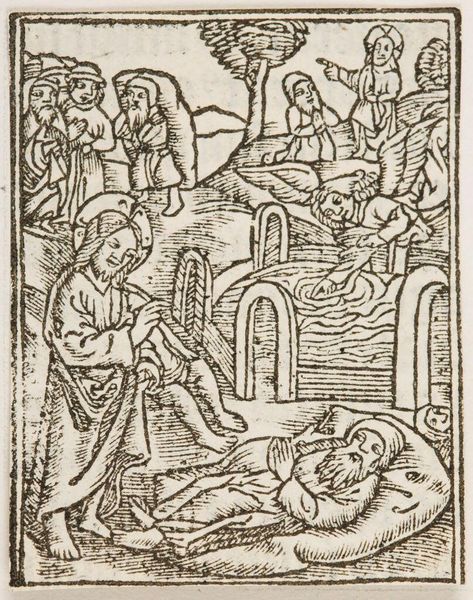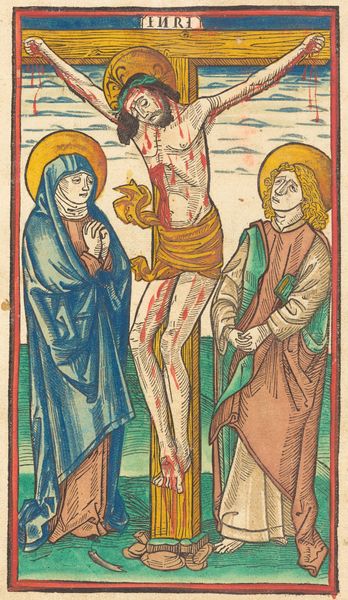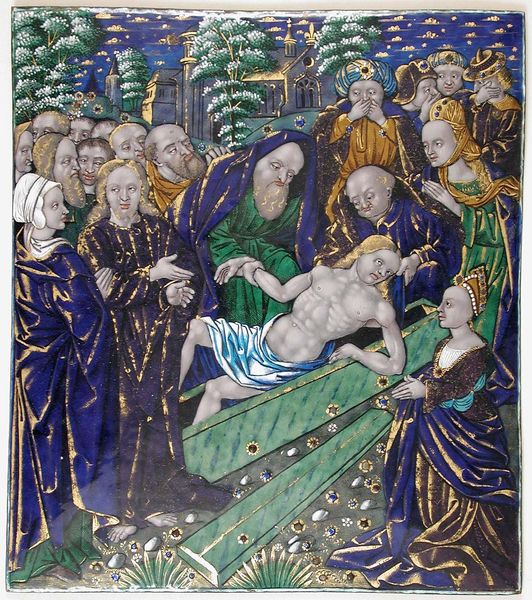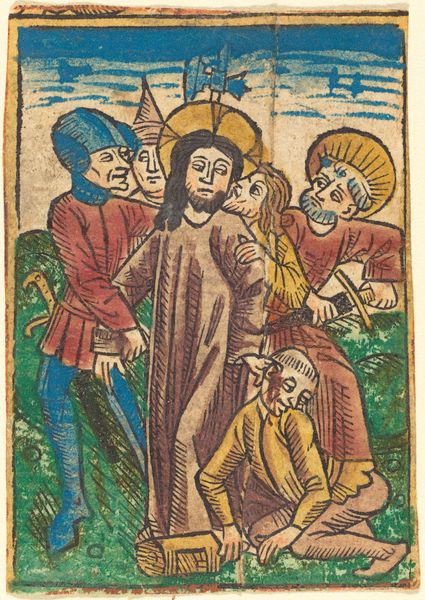
drawing, coloured-pencil, tempera, print
#
portrait
#
drawing
#
coloured-pencil
#
medieval
#
narrative-art
#
tempera
# print
#
figuration
#
coloured pencil
#
history-painting
Copyright: National Gallery of Art: CC0 1.0
Curator: This image presents "The Entombment," a work dating back to around 1490, made with tempera, colored pencil and potentially other materials like drawing ink, and created by an unknown artist. Editor: Immediately, I'm struck by the rough-hewn quality of the coffin. You can practically feel the texture of the wood, which is surprising amidst the otherwise fine detail in the figures. Curator: Indeed. The symbolism here is rather overt, with the haloed figures grieving Christ as he is laid within. But consider the historical weight of the image: its echoes in later depictions of loss and mourning, the universal expression of grief it strives to convey. Editor: Right, and the way the materials are handled speaks volumes. Look at how the colored pencil work delineates the robes, contrasted with the thicker, almost slapdash application of paint in the background. This contrast affects how the figures relate to each other, and their surroundings. Curator: Precisely. Notice, too, the arrangement. It is hierarchical, with Christ as the fulcrum. Each figure represents a different aspect of mourning: disbelief, acceptance, prayer. They all radiate around the void—the literal absence. Editor: Which is powerfully rendered, especially in the carpentry! The coffin, crude yet essential, defines the human act of containing loss. Is this rough construction itself symbolic of humanity's crude, inadequate understanding of the divine? Curator: Perhaps. Remember that medieval art serves to educate as much as it inspires. Images like this offered, and continue to offer, a mirror reflecting human empathy across time. Editor: Ultimately, it is about the labor involved. The drawing reflects spiritual devotion as a process. The artist shows their work through the figures surrounding the corpse. It shows people involved in making the image, while grieving for someone. Curator: A beautiful perspective! It reminds us how artworks transform personal experiences into a language everyone can feel, generations later. Editor: Right, a raw processing that reveals what persists beyond the beautiful poses.
Comments
No comments
Be the first to comment and join the conversation on the ultimate creative platform.
